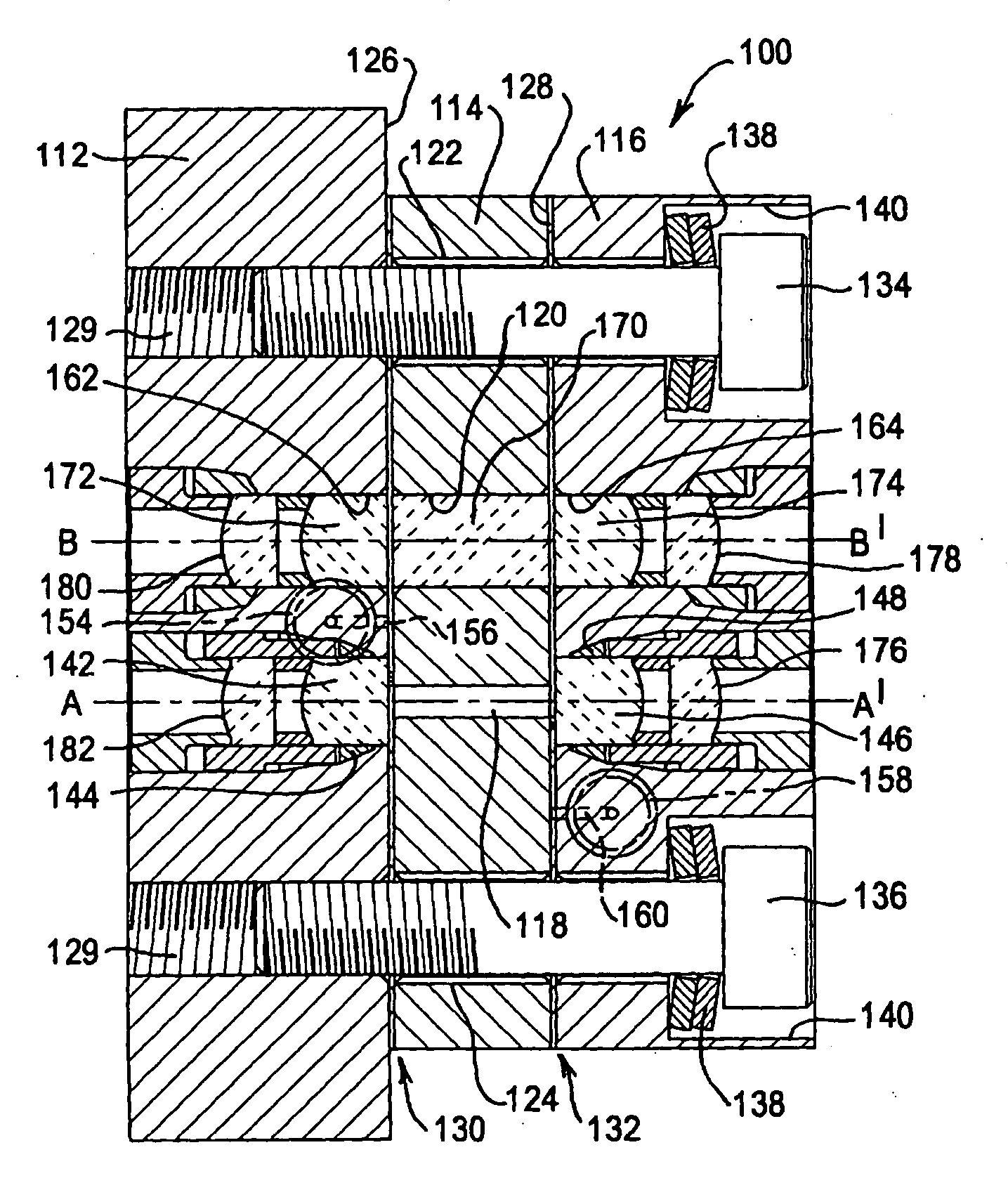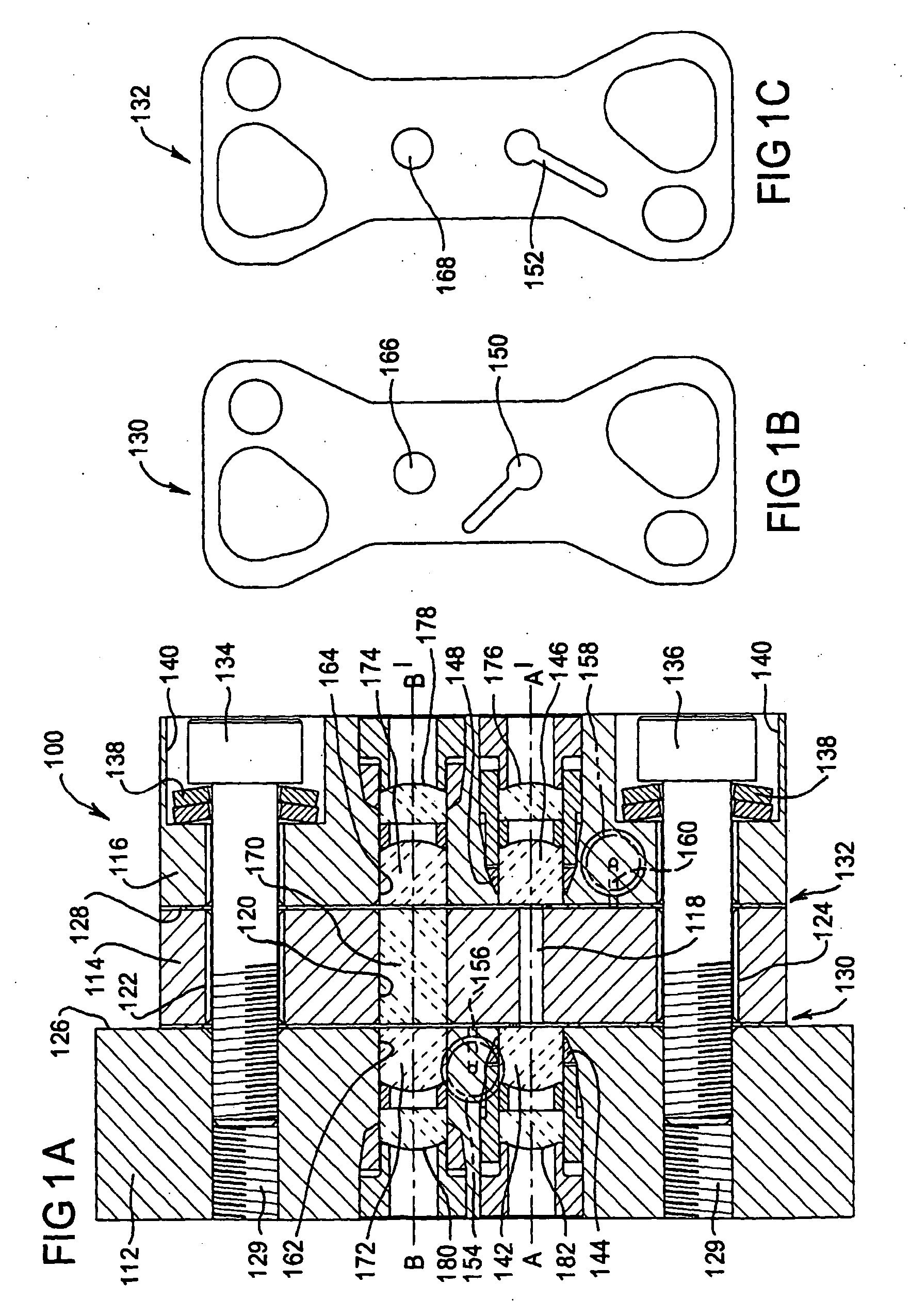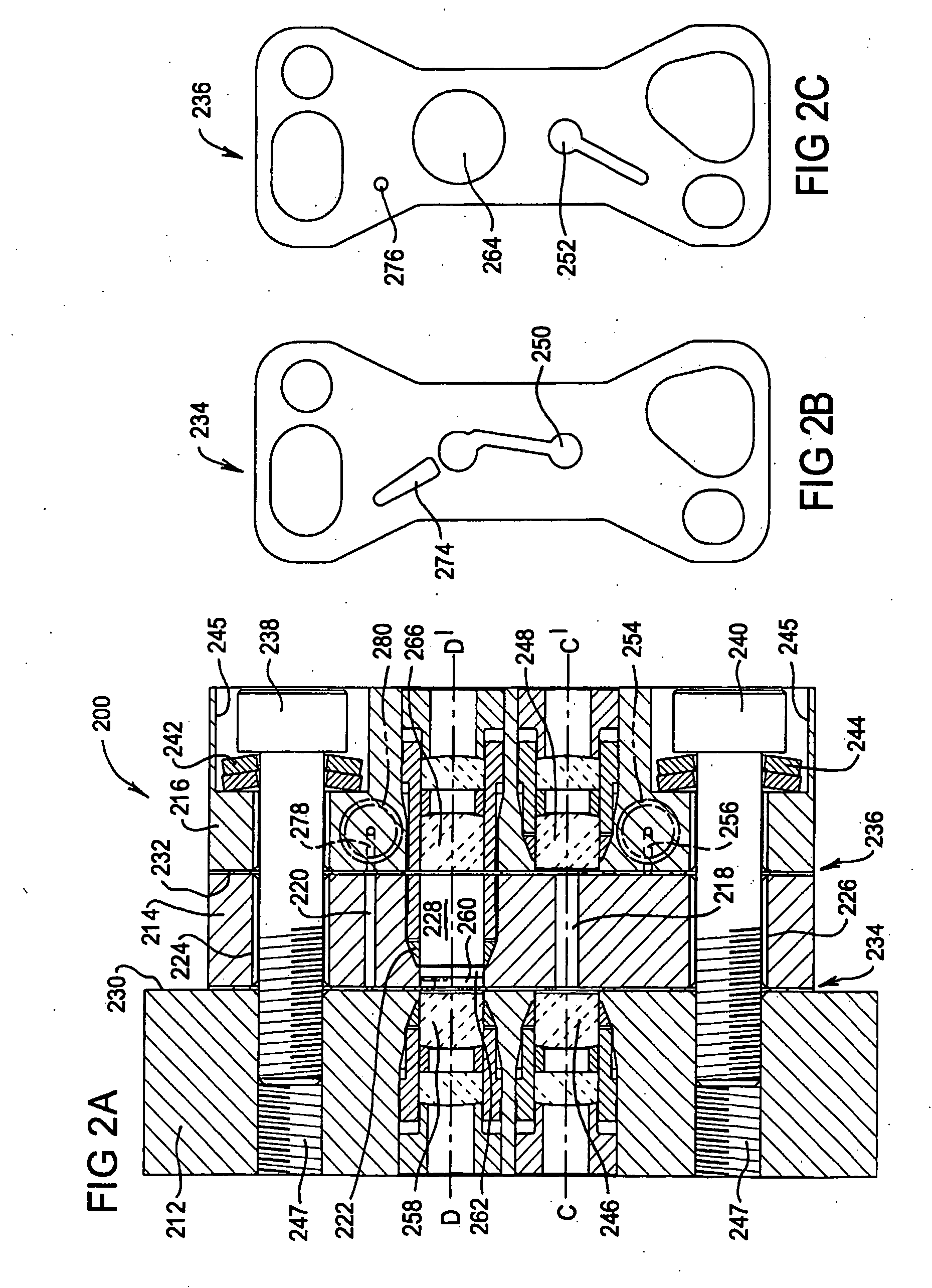Flow through cell for optical spectroscopy
a flow through cell and optical spectroscopy technology, applied in the direction of components, instruments, withdrawing sample devices, etc., can solve the problems of difficult manufacturing of through cells, and achieve the effect of convenient manufacturing, convenient clamping together, and convenient manufactur
- Summary
- Abstract
- Description
- Claims
- Application Information
AI Technical Summary
Benefits of technology
Problems solved by technology
Method used
Image
Examples
Embodiment Construction
[0031] Referring first to FIG. 1A, the illustrated flow through cell 100 is constructed from three body members 112, 114, and 116. Body member 114 is an intermediate body member located between body members 112 and 116. It has two parallel flat faces and includes four holes 118, 120, 122 and 124 extending therethrough perpendicularly from one face thereof. Body members 112 and 116 are provided with parallel flat faces 126 and 128 respectively. Body members 112 and 116 include through holes which align with holes 122 and 124 through intermediate body member 114 for assembling the flow through cell as will be described below. The holes through body member 112 may be threaded as indicated by reference 129. To form cell 100 a gasket 130 (see FIG. 1B) made for example from a tetrafluoroethylene hexafluoropropylene copolymer (‘FEP’, E. I. du Pont de Nemours and Company) is placed against flat face 126 of body member 112, body member 114 is placed against gasket 130, a gasket 132 (see FIG....
PUM
 Login to View More
Login to View More Abstract
Description
Claims
Application Information
 Login to View More
Login to View More - R&D
- Intellectual Property
- Life Sciences
- Materials
- Tech Scout
- Unparalleled Data Quality
- Higher Quality Content
- 60% Fewer Hallucinations
Browse by: Latest US Patents, China's latest patents, Technical Efficacy Thesaurus, Application Domain, Technology Topic, Popular Technical Reports.
© 2025 PatSnap. All rights reserved.Legal|Privacy policy|Modern Slavery Act Transparency Statement|Sitemap|About US| Contact US: help@patsnap.com



